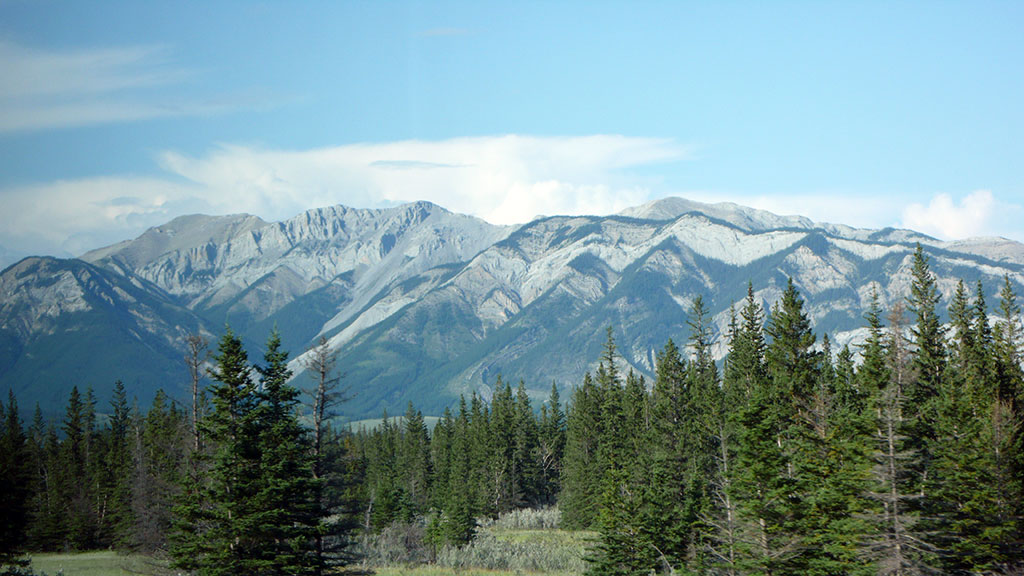
Some years ago, as a recent college graduate, I found myself traveling through the Scottish highlands with the Bishop of New York on an overnight sleeper train from London. We were four in our party, including my godfather who was an intimate of the Bishop, and the Bishop’s companion, a youth slightly older than I. The trip was instigated by my godfather as a reward for my graduation and we were all headed for Edinburgh and thereafter, to a castle that was a part of the Scottish Trust, though for the time being the castle was still in the custody of another close friend of my godfather’s.
Prior to boarding the train, the Bishop and my godfather had received a delivery from Fortnum & Mason of a number of bottles of Rose’s Lime Juice and nearly an equal number of vodka, so that all through the long, dark night as the train climbed into the highlands, the Bishop and my godfather tippled and told slightly off-color stories about Mae West and Honeychile Wilder.
In the morning, when I awoke in my own private sleeping car, my head was splitting but the view was spectacular – and this was perhaps what I recalled most when I accepted an invitation to explore the Canadian Rockies on an overnight train from Vancouver to Edmonton.
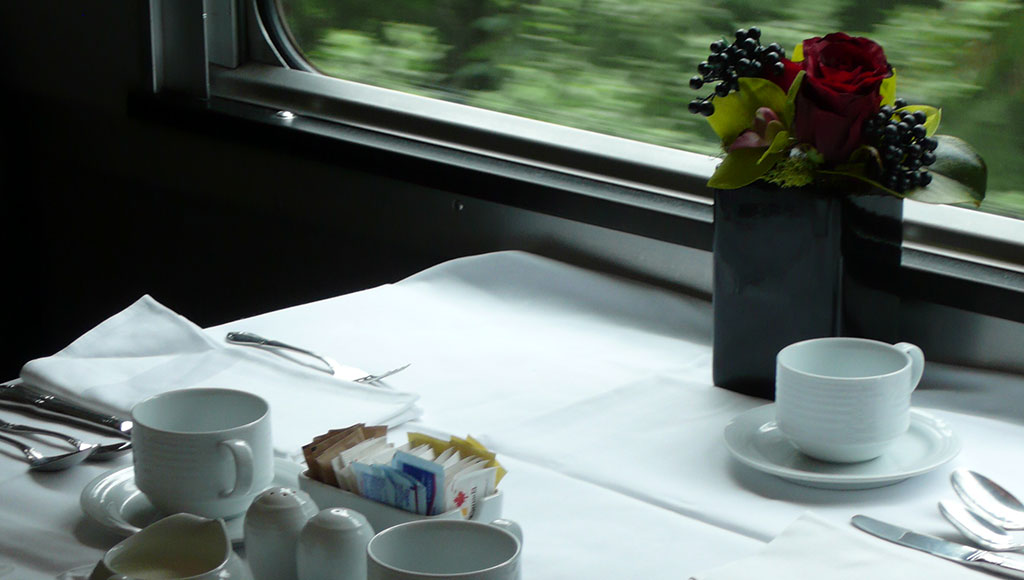
(Source:MRNY)
Romance, intrigue, and spectacular scenery
For years, Hollywood has offered filmgoers glimpses of the romance of rail travel in films such as “Some Like It Hot” with Marilyn Monroe as Sugar singing “Runnin’ Wild” on the train to Miami. In the screwball comedy “Twentieth Century” with John Barrymore and Carole Lombard, the train travels from Chicago to New York. In the hands of Hitchcock, train travel provides a setting for the plotting of a murder in “Strangers on a Train,” just as in Billy Wilder’s “Double Indemnity,” where Barbara Stanwyck’s character tosses her husband onto the tracks. And of course the most famous train film is probably “Murder on the Orient Express,” based on Agatha Christie’s novel of the same name.
Romance, intrigue, and spectacular scenery: it’s a seductive combination – and particularly when you’re traveling on VIA Rail Canada’s flagship, the Canadian. The four-day journey from Vancouver to Toronto is one of the world’s most legendary long-haul journeys – and, arguably, the best way to experience the beauty of western Canada and the Canadian Rockies, a UNESCO World Heritage site.

(Source:MRNY)
Start your adventure with a day (or a weekend) in Vancouver spent sampling the city’s maritime bounty – and then, as the sun sets over the ocean, head to Pacific Central Station and board the Canadian. This renowned train with its stainless steel cars recently underwent a $22 million renovation that included the revamping of the kitchen’s culinary offerings, with a renewed focus on regional Canadian cuisine.
As rail aficionados well know, one of the many joys of train travel is the relaxed pace of life. Unlike the adrenaline rush of stress that so often accompanies commercial aviation in this security-obsessed era, traveling by train is marked by a more leisurely, genteel atmosphere. Porters help you with your bags and store them for you in your sleeper cabins while you head upstairs to the Skyline Car for a glass (or two) of champagne. The Canadian rolls gently out of the station and, just like that, you’re on your way. Sink back into the convivial atmosphere and take note of your fellow passengers – lest one of them disappear at the hands of a femme fatale.
There are two classes of service offered on the Canadian: Economy and Sleeper Plus, with the latter affording access to the Park Car, with its panoramic views and lounge facilities, as well as access to the Skyline Car with its seated dome viewing, lounges, and activity areas.
The staff on the Canadian is as helpful as Julie, Cruise Director, on “The Love Boat.” Feel like playing Backgammon? Or Bingo? How about a drawing contest? On a train, while traveling through the night, board games you haven’t played since you were a kid suddenly possess an irresistible allure.
Even more alluring, however, might be your own personal cabin. When I returned to mine, the porter had lowered the bed, causing the two armchairs to disappear completely and leaving in their place a freshly-made single bed with two bright white, sumptuous pillows. I could hardly wait to slip between the crisp white sheets.
Each cabin, whether one-, two-, or three-bed, comes with turndown service, a closet, sink, vanity, mirror, and ensuite water closet. In other words, everything you need for a blissful night’s sleep. Should you desire a shower before bed, grab your personal shower kit, complete with toiletries and towel, and head to the shower just beyond your cabin door.
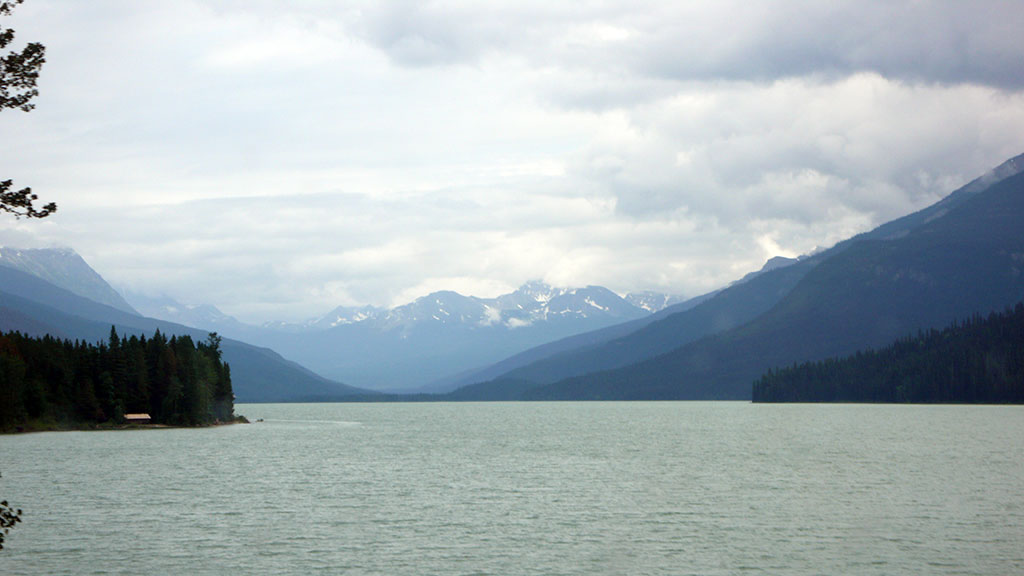
(Source:MRNY)
For some people, there’s nothing so soporific as the gentle rolling of the train as it traverses the tracks – and I’m one of them. I slept like a sated child, maybe dreaming of Hitchcock and Monroe, as well as all those who found shut-eye in the rhythmic lull of a train as it chugged through the night. I left the window shade slightly raised, so that as morning light slipped into my cabin, my eyes opened and, like a child at Christmas, I crawled to the foot of the bed to peer out the window.
The Canadian traverses through deep river canyons and boreal forests of birch, poplar, and conifers and what I saw in the first light of day made me imagine what it might have been like for the First Nationers (Canada’s equivalent to Native Americans): an expanse of land, unsullied by humanity, a wild and lonely landscape tinged with the cold blue of early morning.
I placed my pillow on the windowsill and watched in silent amazement as daybreak touched this unspoiled land. The railroad hugged tight along the rolling, winding river and periodically, I glimpsed a dwelling on a distant hill, a single light illuminating its threshold. Is it any wonder that Canada has produced such a plethora of songwriters and singers – and comedians? For in the face of such unrelentingly spectacular landscapes, what else is there to do but write, sing – and laugh?
Time for self-reflection
Train travel can be wonderfully meditative: a time for self-reflection and, as the train meanders through the mountains, an opportunity to contemplate the direction of one’s own life.
At breakfast in the Dining Car, I met a woman who was returning from an extended family reunion in Vancouver where she had come out to her relatives as a proud lesbian. She, too, was headed to Edmonton, Alberta’s capital, which is generally considered Canada’s gateway to the north – and as we dined on pumpkin pancakes and cheesecake-stuffed French toast and strong black coffee, we discussed our respective families. Because on a train, there’s time to talk – and even time for a second cup of coffee with a former stranger.
As part of its $22 million renovation, the Canadian introduced a new menu in May 2012, which was the direct result of a two-day competition called the Menu Creation Challenge. Over the course of two days, eight chefs created 78 new dishes for VIA Rail travelers. Spearheaded by Chef Martin Gemme, the competition sought to create a menu that was practical for the small onboard kitchens available on long-haul trains, while utilizing local produce and purveyors.
In the Dining Car, where all meals are made to order and prepared onboard, there are two seatings for lunch and dinner, with priority given to those passengers riding Sleeper Plus class. The new menus reflect some of the best of Canadian regional cuisine, including lobster ravioli, duck confit Benedict, Yorkshire pudding, vegetarian chili, quinoa salad, stuffed portobello caps, pan-seared duck, pickerel remoulade, horseradish-crusted trout, and Cobb salad, all paired with Canadian wines. And yes, people do dress for dinner onboard the Canadian: one woman arrived in a sleek little black dress, while a nattily-attired fellow wore a silk rep bow tie.
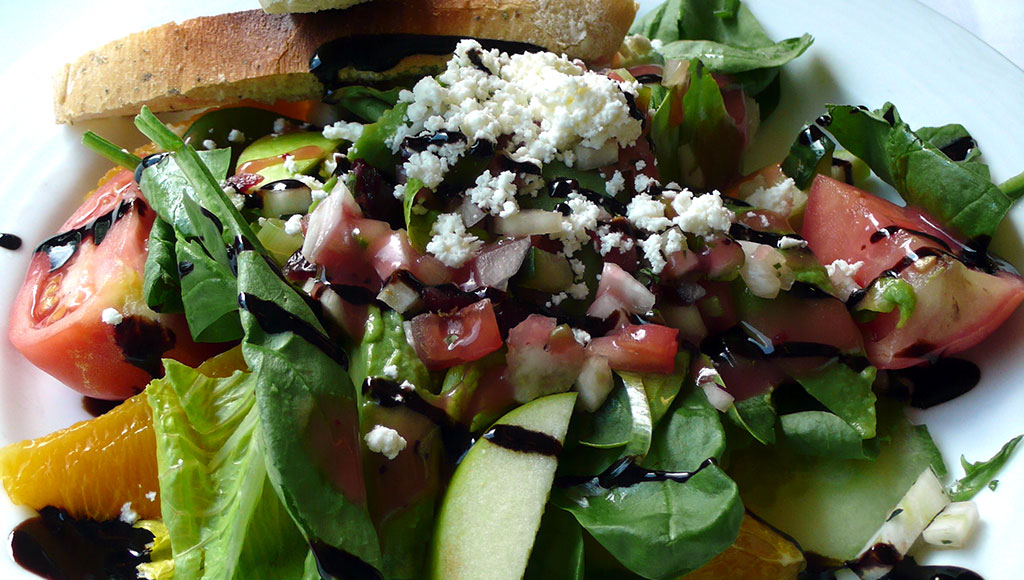
(Source:MRNY)
As the train approached Mount Robson, passengers assembled in the Park Car lounges and in the upper observation deck for panoramic views of the highest point in the Rockies. At nearly 13,000 feet, Mount Robson generates its own weather patterns and that afternoon, clouds gathered around its spire, causing the mountain to look like the classic French dessert île flottante (or “floating island”).
Late in the afternoon, the Canadian made an hour-long pit stop in Jasper, the world-famous ski and outdoor sports resort where, reputedly, elk and mule deer wander with pedestrians down the main street of town. Not that day, however. Nonetheless, the absence of Canadian wildlife did not diminish Jasper’s rustic charms and one Canadian with whom we were traveling recommended an overnight in Jasper in the winter, regaling us with tales of night skating on a pond beneath a sky full of glittering stars.
Back onboard the Canadian, as I headed to my cabin to dress for dinner, I passed through a little cafe where a group was working intently on a jigsaw puzzle. In the lounge, several children gazed mesmerized at a television (proving that some things never change, no matter how magnificent the scenery).
Along the Continental Divide
As I dressed, I found myself staring out the window more often than staring into the mirror – and seriously, when was the last time that happened?
During the past twenty-four hours, we had passed through deep river canyons and high-altitude lakes glittering in the sun, and we had seen “the driest town in Canada” speckled with cactus, sagebrush, and hoodoos, the rock pinnacles left behind after the erosion of a hill, as well as an area known as Hell’s Gate, where a fish ladder was built to help salmon swim upstream.
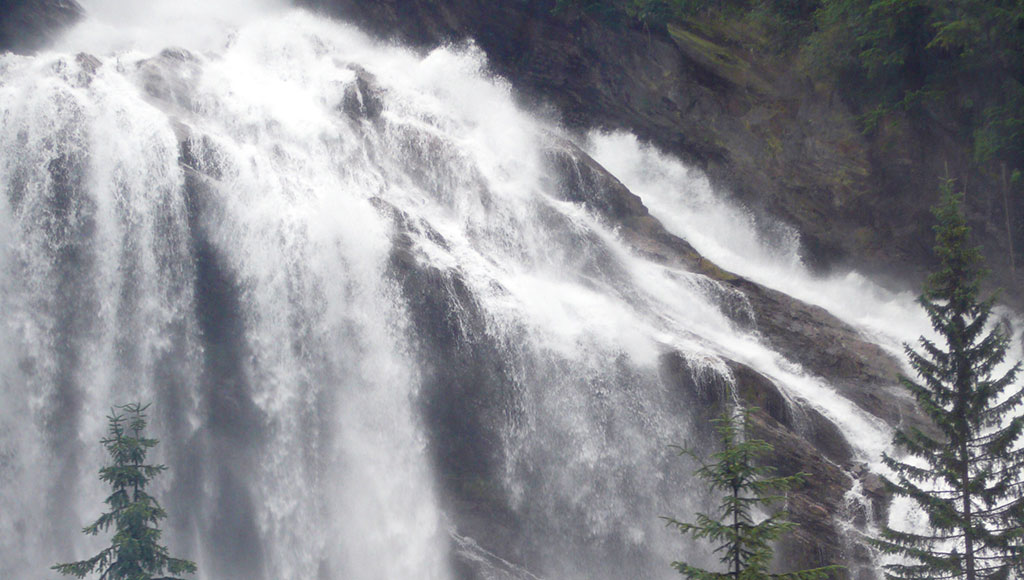
(Source:MRNY)
We had traversed the junction of the Rockies and the Caribou and the crest of Yellowhead Pass along the Continental Divide where the waters flow either east or west to the Atlantic or the Pacific. In short, it felt as if we had rediscovered the entire North American continent and that we were seeing it anew, actually seeing it as the early Canadian explorers had experienced it.
And not for the first time that day, I thought again of the poignant peroration at the close of “The Great Gatsby” when F. Scott Fitzgerald writes, “for a transitory enchanted moment man must have held his breath in the presence of this continent, compelled into an aesthetic contemplation he neither understood nor desired, face to face for the last time in history with something commensurate to his capacity for wonder.”
Later that night when the Canadian pulled into the Edmonton station and I disembarked, I couldn’t help but feel a slight bit of envy for those who remained on the train for another night’s sleep and another glorious sunrise, when the light would slip over the horizon, gradually illuminating the empyrean wonders of the natural world.
“A more human way to travel” is VIA Rail’s motto – and after such a relaxing journey, you might find yourself nodding in wholehearted agreement.
ADDITIONAL INFORMATION:





